- News
- Reviews
- Bikes
- Components
- Bar tape & grips
- Bottom brackets
- Brake & gear cables
- Brake & STI levers
- Brake pads & spares
- Brakes
- Cassettes & freewheels
- Chains
- Chainsets & chainrings
- Derailleurs - front
- Derailleurs - rear
- Forks
- Gear levers & shifters
- Groupsets
- Handlebars & extensions
- Headsets
- Hubs
- Inner tubes
- Pedals
- Quick releases & skewers
- Saddles
- Seatposts
- Stems
- Wheels
- Tyres
- Tubeless valves
- Accessories
- Accessories - misc
- Computer mounts
- Bags
- Bar ends
- Bike bags & cases
- Bottle cages
- Bottles
- Cameras
- Car racks
- Child seats
- Computers
- Glasses
- GPS units
- Helmets
- Lights - front
- Lights - rear
- Lights - sets
- Locks
- Mirrors
- Mudguards
- Racks
- Pumps & CO2 inflators
- Puncture kits
- Reflectives
- Smart watches
- Stands and racks
- Trailers
- Clothing
- Health, fitness and nutrition
- Tools and workshop
- Miscellaneous
- Buyers Guides
- Features
- Forum
- Recommends
- Podcast
review
£2,391.93
VERDICT:
Very stiff, aggressive frame best suited to those who put in a lot of power...
Weight:
7,460g
Contact:
At road.cc every product is thoroughly tested for as long as it takes to get a proper insight into how well it works. Our reviewers are experienced cyclists that we trust to be objective. While we strive to ensure that opinions expressed are backed up by facts, reviews are by their nature an informed opinion, not a definitive verdict. We don't intentionally try to break anything (except locks) but we do try to look for weak points in any design. The overall score is not just an average of the other scores: it reflects both a product's function and value – with value determined by how a product compares with items of similar spec, quality, and price.
What the road.cc scores meanGood scores are more common than bad, because fortunately good products are more common than bad.
- Exceptional
- Excellent
- Very Good
- Good
- Quite good
- Average
- Not so good
- Poor
- Bad
- Appalling
Onix is a new British brand that's only just started to offer complete bike builds. The Azzuro is the top-level bike in the line-up; it's a carbon racing frame that you can have built up as you like from a whole range of different options.
First, though, some controversy... You probably know that most carbon frames are made in the Far East: China and Taiwan. Some are made in Italy, some elsewhere, but the vast majority come from the Far East.
The major brands own their own frame designs. Trek, Specialized, Cannondale and so on have R&D departments that come up with the plans, and those frames are exclusive to that brand. Simple enough.
Then there are 'open mould' designs. These are frame designs (or forks or whatever) that anyone can use and there are loads of them out there to choose from. So, you or I could set up a company, buy a bunch of generic open mould frames, stick a name on the down tube and sell them to the public as Joe Bloggs bikes. There's nothing wrong with an open mould design. A frame that's available from more than one brand isn't necessarily inferior to one that's exclusive. But there is a distinction.
When we did a Just In on the Onix Azzuro, some people commented that this is the same design as an open mould frame called the Hong Fu FM001, and took issue with Onix's claims to have been involved in the design process.
When we put this to Onix they released this statement:
Following recent comments in relation to the Onix Azzuro frame and fork set we would like to make our position clear regarding the manufacture of this model.
The Azzuro is produced for Onix Bikes in the Far East from a specialist carbon manufacturer. We maintain strict control over the materials used and quality control procedures employed, with the frame and fork being constructed entirely of Toray T1000 carbon, laid up to our specification and constructed using an ultra high pressure technique.
Frames and forks are finished in-house to the highest standards and to our own designs.
We have no link to any other suppliers and prospective buyers should not confuse any other untested products from international vendors with our extensively controlled range.
UK customers can buy with full confidence from Onix Bikes knowing our products are fully guaranteed, with full UK statutory rights.
Our 2011 bikes have been thoroughly tested by a winner of both classic races and stages in the GrandTours and are currently being ridden by continental based professionals.
We are already developing our 2013 range, as well as looking forward to offering our 2012 range in the New Year and enjoying fantastic feedback from customers who own our existing bikes.
Craig Middleton - Managing Director: Onix Bikes
We'll come back to the frame material in a bit.
What continued to concern us were several claims regarding the design process made on Onix's website and in the marketing literature that they'd sent us. For example, Onix had said, 'We wanted to take it [the Azzuro design - Ed] one step further and come up with something unique to our brand. That's when we hit upon the idea of the Onix Unsymmetrical Chainstays.
'Under testing, we found that by increasing the width of one chainstay vertically and then repeating the process horizontally on the one opposite, the stays were able to accept much larger loads.'
In what sense could the Onix designers be said to have 'hit upon the idea' of the chainstay design or increased the width of one and the height of the other if the Hong Fu FM001 was already in existence?
We put this to Onix and they accepted that some of the information on their website was misleading and they've since removed it. Onix don't want to release the name of Classics and Grand Tour stage winner they referred to in their statement, by the way, so as not to upset another brand.
You can buy a Hong Fu frame online for $270 (approximately £164.50 on today's exchange rate), although you'd have to pay shipping and import tax too. Is it exactly the same as the Onix frame? Onix say it's the same mould but that it's not the same carbon.
As the statement above says, 'The [Onix] frame and fork [are] constructed entirely of Toray T1000 carbon, laid up to our specification and constructed using an ultra high pressure technique.'
We contacted Hong Fu and asked what their FM001 frame is made from. It's Toray T700 carbon. T700 is more commonly used in the bike industry than T1000 but it's not as stiff and has a lower tensile strength.
Onix say they use a strengthened rubber bladder inside the frame during the moulding process that compresses more of the resin and coats the fibres more thoroughly. They call the material produced Onix HP (high pressure) carbon.
'Due to the extra compression of the resin we could then add extra layers of carbon to the high stress areas of the frame to increase stiffness and performance without increasing weight or losing the ride quality,' they say.
So there you go. The Onix frame comes out of the same mould design as the Hong Fu frame but it's made from a different type of carbon and, Onix say, the build process is their own.
I'll get on with the normal review now...
Frame
It's certainly a distinctive frame with slightly concaved faces on both the top tube and the down tube. Rather than me rattling on about the profile of that slightly sloping, slightly bowing top tube, check out the pics - it'll be much easier because it's far from a regular shape. The down tube has a tear-drop profile with those sides dipping inwards a little before ovalising in the bottom section to reach across the width of the bottom bracket.
The bottom bracket itself is the typical screw-in type with external bearings but the area that houses it is huge. It's a carbon cavern down there. Then you get those chainstays I mentioned. The driveside one has a tall and narrow profile, the same as most, while the opposite one is flattened - the profile is short and wide through the centre section.
Onix say, 'This not only increases overall stiffness significantly, but also dramatically improves performance (especially while sprinting), handling and the quality of the ride.'
The wishbone seatstays hook up with the top tube and seat tube in another large cluster while up front the head tube is another thickset affair. It's a bit of a barrel although the bearings it houses at either end are standard 1 1/8in. The Onix-branded fork comes with a carbon steerer to match the blades.
We have the 58cm version of the Azzuro here (they offer 50, 52, 54 and 56cm too) which comes with 73 head and seat angles - nothing too unexpected there. The front end is about average height thanks to an 18.5cm head tube, but the top tube is long - the effective top tube is 59cm. With that long top tube, the wheelbase is extended too; it's 101.3cm.
The frame is finished attractively enough with panels left unpainted that show the carbon finish underneath. The one curious feature on that front is the positioning of the logo on the seat tube; the band for the front mech goes right over the top of it.
Components
You can buy the Azzuro as a frameset for £999.99 (it has just come down in price from £1,099) or you can use the Bikebuilder facility on Onix's website and spec it as you like from a wide range of options. Shimano complete builds start at £1,549.99. That price gets you a build based on a 9-speed Tiagra groupset and R500 wheels. Campagnolo builds start at £1,599.99. Pay that and you'll get a Veloce groupset and Khamsin wheels.
Our test bike came with a Campag Centaur groupset - Centaur being the fifth level down, or one above entry-level Veloce, depending on how you look at it. Centaur is still a 10-speed group although it has been redesigned for 2011 and now features Campag's Power-Shift controls which allow you to move up the cassette three sprockets at a time (this also features on 11-speed Athena).
2011 Centaur also comes with a new bottom bracket/chainset design called the Power Torque System - which is easier to install and service than before and more economical. We went for the version of Centaur with a carbon chainset and Ergo-Power controls; it's about 90g lighter and £90 more expensive than the alloy version.
The wheels are from Campag too - medium profiled Zondas - which weigh in at about 1,600g for the pair (plus QR skewers). We also had a Deda stem, Ritchey WCS Logic II triple-butted alloy bar, and a Fizik Arione saddle sitting on top of Onix's own carbon seatpost.
Ride
Like I said earlier, there's absolutely no reason why an open mould frame shouldn't build into a good bike - I've ridden plenty that are just that - and the Azzuro puts in a solid all-round performance.
Where the Azzuro scores best is in its stiffness. The large tubes in the middle of the bike hold everything in place strongly so there's next to no sway around the bottom bracket, and it's a similar tale at the front where the chunky head tube provides a firm anchoring point for the fork.
The alloy cockpit adds to the sturdy feel. The Deda Zero 1 stem is a cheap option - you can pick one up for about 20 quid online even in this more expensive white guise - but along with the Ritchey WCS Logic II bars it stays straight enough when you stand up on the pedals and heave the front end about. Even it you're a stronger and/or larger rider who tends to snap lightweight kit in two with your bare hands, this setup will provide a good, solid foundation for sprints and out of the saddle climbs.
Handling is good too, the Azzuro heading where you point it with minimal deviation no matter how sharp you turn or how far you lean it over. I could have done with a shorter stem to reduce that lengthy reach and quicken up the steering a touch, but that's a different matter. I've not used Zonda wheels all that much before but they've proved themselves more than capable through the twists and turns despite having only 16 bladed spokes at the front and 21 at the rear.
21? That's because they're built using Campagnolo's G3 spoke pattern. They're grouped in seven batches of three; two to the driveside, one to the non-driveside. The idea is that the driveside has to handle more stress so they bump up the number of spokes to share out the tension more evenly. Whatever the rationale, the rear wheel transfers the torque effectively and I didn't experience much flex at all during standing climbs, despite doing my best to bend it out of shape.
All that stiffness results in quite a bit of feedback from the road. Some people might think a little too much, but that'll come down to personal preference. It's not like you can feel every piece of gravel on the road surface but if you had a scale with 'plush' written at one end and 'rigid' at the other, this bike would certainly sit towards the 'rigid' end.
That's not to say that I found the Azzuro harsh or uncomfortable. It is firm but it's not over the top. There's enough give in the Fizik Arione saddle, for example, to keep you smiling as you rack up the miles. It has a pretty large surface area, as racy saddles go, to spread the pressure and the padding is fairly deep. It's one of those saddles that most people like.
I find Campag levers really comfy to rest on too. You get the Vari-Cushion silicone hoods which damp out pretty much all vibration that comes their way. I never get any aches in my hands when I use these, no matter what the roads are like, and I occasionally do with other brands.
If you've not used Campag before, changing gear is via both a thumb lever that lives on the side of the control body and a swinging lever that sits behind the brake lever. With Centaur, the thumb lever moves you down the cassette one sprocket at a time, the other one allows you to shift up the cassette a maximum of three sprockets per swing. I guess if you have really small hands you might find it hard to stretch up to the thumb lever when you're on the drops... but that's unlikely. Whatever system you're coming from, it soon becomes second nature and in my experience Campag systems need little in the way of adjustment.
I've been using Campag's top-level Super Record lately and the biggest difference in terms of function between this and much cheaper Centaur is that you get the option to shift multiple sprockets in both directions. To be honest, though, it's pretty rare that you want to change up more than one at a time.
I wouldn't say the Onix sparkles when you hit the climbs but it puts in a sound performance. It weighs 7.46kg or 16.4lb (without pedals) which isn't mind blowing but it's decent for a bike of this price. The closest road bike to this in terms of price that we've tested lately is the £2,669 Canyon CF SLX 8.0 and that weighs 6.96kg (15.3lb) - just over a pound lighter.
Our Azurro came with a standard 53/39T chainset matched up to an 11-25 cassette but you could just as easily ask Onix to fit a compact if you wanted more hill climbing options. With its aggressive geometry and its stiffness, this is more of a race bike than a sportive bike, but you can go for an easier spread of gears if you like.
A couple of little things to clear up before I go... When I wrote the Just In on the Azzuro, I mentioned that the cable stops for the rear brake cable sit on the side of the top tube rather than on the top or bottom. I wondered whether the one at the seat tube end would ever get in the way while pedalling. For the record, it doesn't; no short-snagging, no nothing.
And what about those chainstays? Does that asymmetric design really affect the performance? To be perfectly honest, I haven't got a Scooby Doo. And being unlikely to ever ride the same bike with standard chainstays, I'm never going to. Anyone who says any different is talking out of their, um, hat in my opinion... unless they have two versions of the same bike, one with asymetric stays and one plain old symmetrical ones.
But while I'm on about the chainstays, it's worth mentioning that the non-driveside one provides less heel clearance than the driveside one. You could only find that a problem if you pedal with your heels in and toes out, five-to-one style. If you're concerned, Onix give you a 20-day trial period so if you're not happy, you can always send the bike back for a refund.
As for the price, well, there aren't all that many Campagnolo Centaur-equipped bikes out there to compare it with but we do have one in for review at the moment. That's the Argon 18 Krypton and, with Fulcrum Racing 5 wheels (considerably cheaper than the Onix's Zondas), it costs £2,199.
Canyon, who like Onix sell direct to the consumer, provide the Ultimate CF 7.0 with a Campag Athena groupset - a level higher than the Onix's Centaur - and Mavic Ksyrium Elite wheels for just £1,699. They also do the Ultimate CF 9.0 with Campag Chorus groupset - a level up again - and the same Mavic Ksyrium Elite wheels for £2,229. It has to be said that we've not ridden either of these Canyons (although we have tested the closely related Ultimate CF SLX) but on paper they look better value for money.
Verdict
Very stiff, aggressive frame best suited to those who put in a lot of power... Good value rather than the stunning value for money of some direct-to-consumer models
road.cc test report
Make and model: Onix Azzuro
Size tested: 58cm
About the bike
State the frame and fork material and method of construction. List the components used to build up the bike.
Frame: Toray T1000 carbon fibre
Fork: Carbon (inc steerer)
Groupset: Campagnolo Centaur 10 Spd Carbon (53x39,172.5, 11-25)
Wheels: Campagnolo Zonda
Bars: Ritchey WCS alloy Logic II (42cm)
Stem: Deda 01 White (120mm)
Seatpost: Onix UL1 Ultralight Carbon
Saddle: Fizik Arione White (manganese rails)
Tyres: Continental GP4000S
Bar Tape: Deda Black
Cage: Onix BC1 Carbon Bottle Cage
Tell us what the bike is for, and who it's aimed at. What do the manufacturers say about it? How does that compare to your own feelings about the bike?
It's more of a road race bike than a sportive bike in terms of geometry and stiffness.
Onix say, "When we started on the concept of the Azzuro we wanted to source a stiff performance frameset - something that gave us the opportunity to add a high performance racing frameset to the Onix range.After having a number of moulds tested by professional riders the Azzuro mould stood out as being super stiff with great geometry. We then produced our frame from the mould in our own carbon under strict control from us using our own method.
"The results were fantastic and the Onix Azzuro was born."
Frame and fork
Overall rating for frame and fork
8/10
Tell us about the build quality and finish of the frame and fork?
It's very good. The positioning of the rear brake cable stops and a couple of the graphics are curious (see text) but that's not really a reflection on the quality of construction.
Tell us about the materials used in the frame and fork?
Toray T1000 carbon fibre. See text for info on material. It's a high quality material
Tell us about the geometry of the frame and fork?
It's a road race geometry with a top tube and wheelbase that are both a little longer than usual. The head and seat angles are both 73
How was the bike in terms of height and reach? How did it compare to other bikes of the same stated size?
Longer reach than usual - 59cm top tube.
Riding the bike
Was the bike comfortable to ride? Tell us how you felt about the ride quality.
See text on this. Its certainly on the firm side but I didn't find it uncomfortable.
Did the bike feel stiff in the right places? Did any part of the bike feel too stiff or too flexible?
It majors on stiffness. If you're a big and/or strong rider, that's likely to be more important to you than if you're smaller and/or less powerful.
How did the bike transfer power? Did it feel efficient?
Yes, certainly efficient.
Was there any toe-clip overlap with the front wheel? If so, was it a problem?
None
How would you describe the steering? Was it lively, neutral or unresponsive? A touch slow but only because of a 130mm stem.
Tell us some more about the handling. How did the bike feel overall? Did it do particular things well or badly?
A stable set up. A good bike for getting your head down on fast straights.
Which components had the most effect (good or bad) on the bike's comfort? would you recommend any changes?
The Fizik Arione saddle is very comfy, as are the Campag silicone hoods.
Which components had the most effect (good or bad) on the bike's stiffness? would you recommend any changes?
The Zonda wheels are stiff enough -I didn't experience any notable flex.
Rate the bike for efficiency of power transfer:
9/10
Rate the bike for acceleration:
8/10
Needs to be a bit lighter to compete with the best.
Rate the bike for sprinting:
9/10
Frame stiffness is great in a sprint
Rate the bike for high speed stability:
8/10
Rate the bike for cruising speed stability:
8/10
Rate the bike for low speed stability:
8/10
Rate the bike for flat cornering:
8/10
Rate the bike for cornering on descents:
8/10
Rate the bike for climbing:
7/10
The drivetrain
Rate the drivetrain for performance:
7/10
Rate the drivetrain for durability:
7/10
Rate the drivetrain for weight:
7/10
Rate the drivetrain for value:
6/10
Centaur is not especially good value on a bike of this price
Wheels and tyres
Rate the wheels and tyres for performance:
8/10
Rate the wheels and tyres for durability:
7/10
Rate the wheels and tyres for weight:
7/10
Rate the wheels and tyres for comfort:
7/10
Rate the wheels and tyres for value:
7/10
Controls
Rate the controls for performance:
7/10
Rate the controls for durability:
7/10
Rate the controls for weight:
7/10
Rate the controls for comfort:
9/10
Rate the controls for value:
7/10
Not especially good value on a bike of this price
Your summary
Did you enjoy riding the bike? Yeah, a solid bike
Would you consider buying the bike? Not for me, no.
Would you recommend the bike to a friend? Maybe to someone wanting a really stiff frame...
Rate the bike overall for performance:
7/10
Rate the bike overall for value:
7/10
About the tester
Age: 40 Height: 190cm Weight: 74kg
I usually ride: My best bike is:
I've been riding for: Over 20 years I ride: Most days I would class myself as: Expert
I regularly do the following types of riding: time trialling, commuting, sportives, general fitness riding,
Mat has been in cycling media since 1996, on titles including BikeRadar, Total Bike, Total Mountain Bike, What Mountain Bike and Mountain Biking UK, and he has been editor of 220 Triathlon and Cycling Plus. Mat has been road.cc technical editor for over a decade, testing bikes, fettling the latest kit, and trying out the most up-to-the-minute clothing. He has won his category in Ironman UK 70.3 and finished on the podium in both marathons he has run. Mat is a Cambridge graduate who did a post-grad in magazine journalism, and he is a winner of the Cycling Media Award for Specialist Online Writer. Now over 50, he's riding road and gravel bikes most days for fun and fitness rather than training for competitions.
Latest Comments
- the infamous grouse 1 sec ago
or for tyre manufacturers to give the distance from bead-to-bead. then, using the internal rim width measurement as chord length, one can calculate...
- HLaB 13 min 31 sec ago
I'm not quite sure how you get bikes into Pottyboro's recycling centre, it a pretty car orientated layout with a sharp ramp up into a building of...
- Rendel Harris 25 min 30 sec ago
Well yes, I read that in the article but who would honestly use the phrase "I'm number one for the Gas"? But give them the benefit of the doubt by...
- lukebarog 59 min 8 sec ago
I experienced the same. They have a sizing chart on their website which looks really accurate, gives the widths in millimeters for all the...
- anotherflat 1 hour 5 min ago
I cannot see how the type of cycle lane has any bearing on cars pulling out in front of you....
- Louis Wells 2 hours 4 min ago
it would be funny if a judge could ban the passenger from driving (if licenced) and give them an asbo preventing them form being a passenger in a...
- mark1a 2 hours 46 min ago
Posting them here in the comments six times a day is just excessive anyway.
- Creakingcrank 3 hours 22 min ago
I use a cheap motorcycle dashcam on my e-bike (~£100 for 2 cameras and a common recording box). Comes with a wired remote that I don't bother with....






























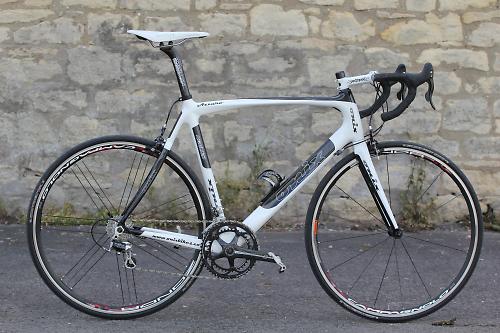
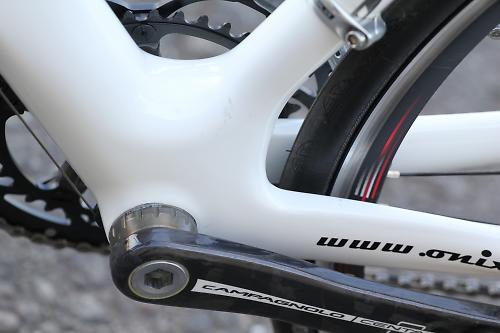
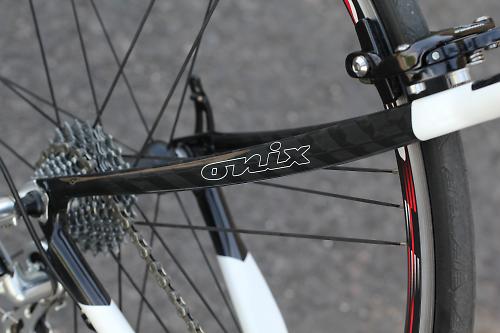
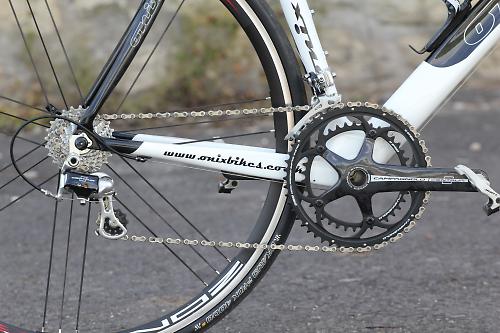
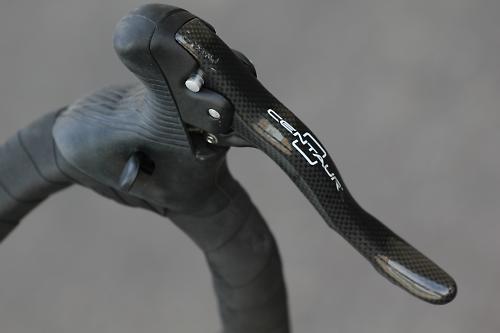

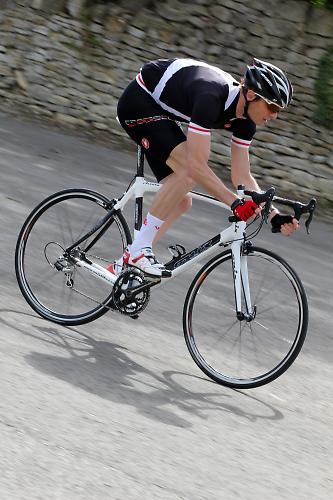


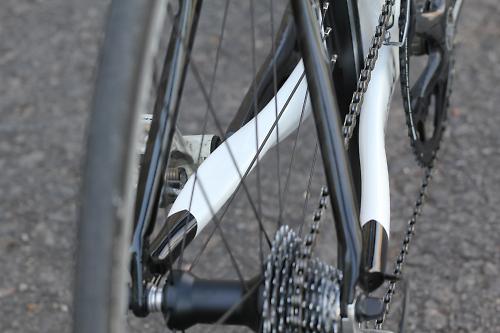

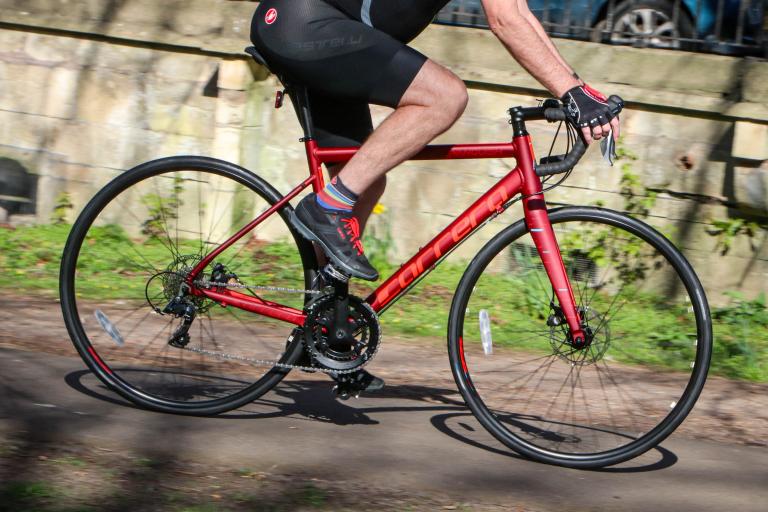

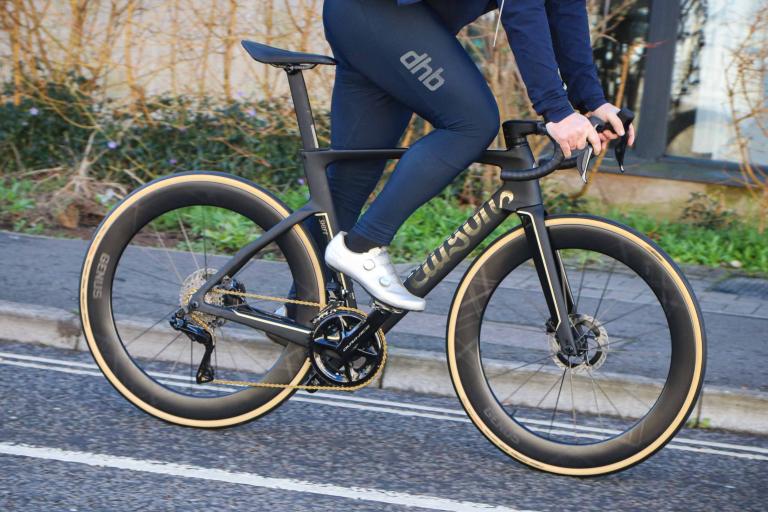
Add new comment
10 comments
I really appreciate the insight provided at the start of this review. I was aware of Onix was weighing up their Aurious as one of my possibles. Generally coverage was positive, however, the company's cheeky ploy to claim credit for a generic frame doesn't go down too well in these parts.
Brings to mind the old saying - you never get a second chance to make a first impression.
A fascinating read - a well put together piece - I wish the company well.
I have the 'cheap' chinese version of this frame and i love it.
Interesting article on the UCI comments about bikes made in China and the actual costs.
http://www.bikebiz.com/news/read/light-composite-bikes-made-in-china-sla...
The most interesting thing about that article is how hopelessly out of touch McQuaid is, don'tcha think? and I'm also liking the casually racist assumption that they can't make things properly in the Far East.
as above, really good, thorough review, and props for asking the questions we really wanted answered rather than just ctrl-v-ing the press release. sure, get your bikes built in taiwan - they may be very good bikes, but if you go telling us that you came up with the idea for something yourself, make sure it's true...
would def go for the canyon given the gulf in finishing kit at a comparable price though....
I think it needs pointing out that 90% of brands (Ribble/Planet X etc) in the UK are doing what Onix are doing as per using open moulds.
This is a very common practice across the world with only the very big major brands creating there own moulds due to the costs involved.
From speaking to Onix myself the thing I like about there take on it is that they get the moulds tested and raced by Professionals from the top of the sport and take advice on which ones to use.
Also they have there own process and carbon (TOP CARBON BY THE WAY)to give piece of mind on quality.
I know many people who have bought a cheap carbon frame direct from the far east and it falls apart after 400 miles.
So it seems to me that Onix have put some thought into it and dont just pick a frame and put a pretty paint job on it and sell it,
It looks like they may have made a few mistakes which they have put right swiftly so im willing to look past that and welcome another brand to the marketplace that can only be good for the consumer.
Im interested to see what they come up with next year!!
That's interesting about the moulds, and thanks for challenging them so robustly on this issue and for reporting on it - very confidence-inspiring.
Is this sort of thing very common?
http://inrng.com/who-makes-what/
This is an interesting list of some major brands and the 'real' names behind them. What is disturbing about the above case is the claim that they have designed aspects of the frame themselves, giving the impression that they have a genuinely unique product, when in fact all they are doing is assembling components from other manufacturers and branding them as a complete bike.
Nice reporting, followed by a very fair review.
That's what Campagnolo say, but having just installed a Power Torque chainset I would say that it is as easy to install as Ultra Torque (the one with the the half axles), is cheaper, but is harder to service.
To install Ultra Torque you need a 10 mm hex key with a long head. To install Power Torque you need a 14 mm hex key, which is about as difficult to obtain. You can buy both online easily enough, but will probably fail to find either in your local ironmonger / DIY store.
To take Ultra Torque cranks off, you undo the 10 mm hex bolt, and the cranks come apart. To get Power Torque cranks off you take off the crank bolt with the 14 mm hex key, but then you need a Campagnolo UT-FC090 (£20 for a widget to protect the end of the axle) plus the right kind of bearing puller to pull off the left crank. I hope someone like Park Tool will make a crank puller for them.
Ultra Torque bearings can be replaced with the appropriate tools (the bearings are quite cheap), but the same tools can't be used for the left Power Torque bearing which is pressed into its bottom bracket cup.
The Power Torque chainset system is very nicely engineered and made. It is a shame that it needs new tools to service.